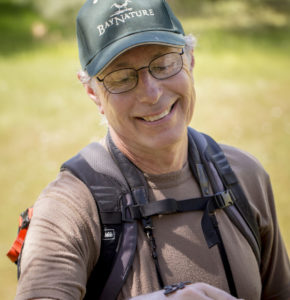It was already midday when we stepped onto the steep, rocky single-track of the North Peak Trail from the small parking lot at Devil’s Elbow. I’d taken this route many times, but almost always in the spring, because it’s a good starting point for one of my favorite Bay Area wildflower hikes: the six-mile circumnavigation of the summit of Mount Diablo. But it was late September, so I hadn’t come to see wildflowers. Instead, I’d come to check out the impact of a wildfire that had engulfed the northeast side of the mountain three weeks earlier.
I have a mixed reaction when I hear that a place I know and love has been hit by wildfire. On the one hand, there’s a visceral recoil: Will this cherished place survive? But on the other hand, there’s a thrill that comes from anticipating dramatic changes to a familiar landscape.
This post-fire walk of discovery was rather slow going, as we had to keep stopping to puzzle out what we were seeing along the trail. You hear that most wildfires are “patchy,” burning hot and fierce in one spot, but then only lightly touching — or completely jumping over — another. So I wasn’t surprised that some areas — such as the large stand of skeletal black coyote bush stalks below us — appeared completely scorched while other patches nearby were still green. But there were plenty of places that displayed an almost inexplicable diversity of impacts within a few yards of each other.
It wasn’t hard to imagine what might have happened to a gray pine with several branches completely blackened and devoid of needles, several other branches with needles scorched brown by the heat, and others with needles still fully green. Or the ceanothus with shiny leaves that looked like they had been dipped in liquid bronze. But how to interpret a shady area of low-growing live oaks where the vegetation on the ground was completely charred, but the branches and leaves of the oaks, just four feet above the ground, appeared untouched by fire or heat? And those bright red flowers of California fuchsia on rock outcrops, with the evidence of fire all around them: Had these late bloomers survived the fire unscathed, or emerged afterward?
All in all, I came away with a sense not of tragedy but of resilience. For even though the Morgan Fire was large, I could see plenty of surrounding habitat that might provide temporary refuge for wildlife and seed banks for the recovery of burned areas.

So it’s not the changes wrought by one large fire that concern me. It’s the fact that as I write this letter it’s yet another beautiful, sunny November afternoon, and that only 1.6 inches of rain have fallen in Berkeley since July 1, after the driest January through June on record. We face the prospect of yet another dry year, and the worrying thought that this could be a harbinger of hotter, drier years to come as a result of climate change — with the associated threat of more frequent and more devastating fires.
The mountain itself, that iconic up-lifted massif on the eastern edge of the Bay Area, will survive just fine no matter what nature throws at it. But what we find there may look quite different than it does now. So you might want to take advantage of a sunny winter day to get out and watch Mount Diablo heal itself. And if it starts raining hard, give thanks and put the trip off until spring. Then go out and chase some bright orange fire poppies up those fire-renewed hillsides.
Note: This issue is the last to be produced by our long-time designer, David Bullen. Thanks, Dave, for 53 gorgeous issues of Bay Nature.




-300x225.jpg)